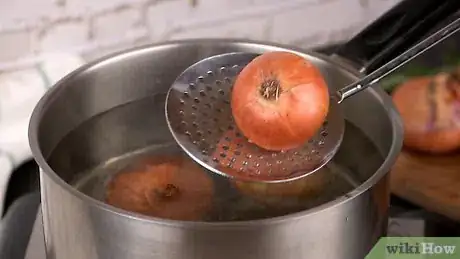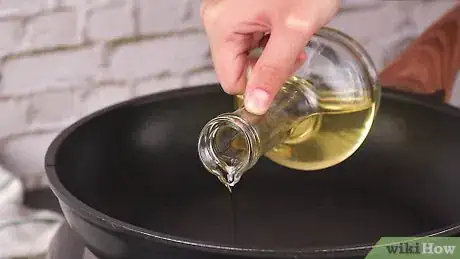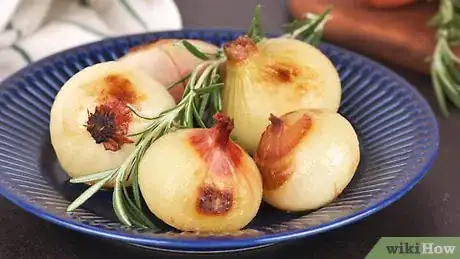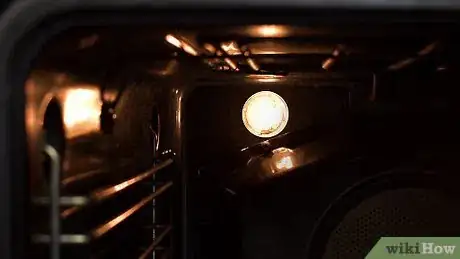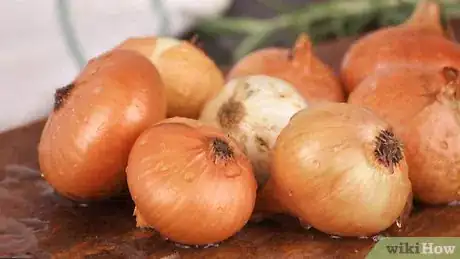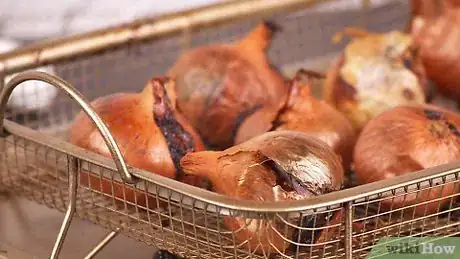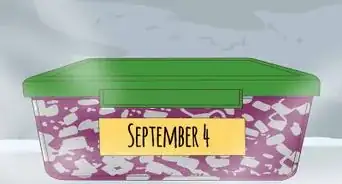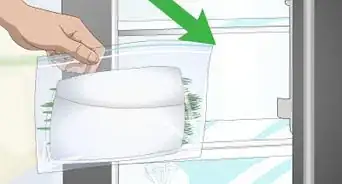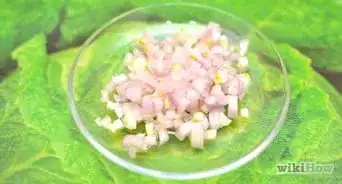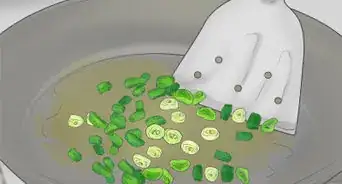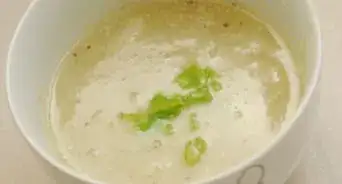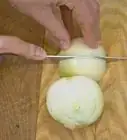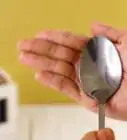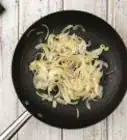This article was co-authored by wikiHow staff writer, Janice Tieperman. Janice is a professional and creative writer who has worked at wikiHow since 2019. With both a B.A. and M.A. in English from East Stroudsburg University, she has a passion for writing a wide variety of content for anyone and everyone. In her free time, you can find her working on a new crochet pattern, listening to true crime podcasts, or tackling a new creative writing project.
There are 7 references cited in this article, which can be found at the bottom of the page.
The wikiHow Culinary Team also followed the article's instructions and verified that they work.
This article has been viewed 14,558 times.
Learn more...
Shallots aren’t just a fancy appetizer that you can only order in restaurants—they’re an often-forgotten member of the onion family that can make a tasty addition to your meals at home.[1] If you’re looking for a quick cooking option for your shallots, prepare them on the stovetop to give them a tasty, caramelized flavor. If you don’t mind waiting a little longer, you can cook your shallots in the oven and serve them as a flavorful side dish.
Ingredients
- 3 US tbsp (44 mL) of vegetable oil
- 4 cups (600 g) of whole shallots
- 1.8 US tbsp (25 g) of butter
- 2 bay leaves
- 1 sprig of thyme
- 2.1 cups (500 mL) of beef stock
Makes 8 servings
- 1 lb (0.45 kg) of whole shallots
Makes 4 servings
Steps
Caramelized Shallots
-
1Boil your shallots for 2 minutes and rinse them with cool water. Fill a large saucepan with water and bring the water to a boil. Submerge 4 cups (600 g) of shallots in the boiling water and leave them for 2 minutes to soften up the skins. Then, drain the shallots through a colander and rinse them off with cool water to stop the cooking process.[2]
- For reference, you can get 1 cup (150 g) from about 0.35 lb (0.16 kg) of shallots.
- Feel free to dump out the old water when you’re done.
-
2Peel the shallots to remove all of the skin. Trim away the roots from the end of the plant with a knife. Slide your knife in a vertical line down the surface of the shallot, which helps start the peeling process. Pinch and peel the outer skin away from the shallot.[3]
- If you’re roasting your shallots, you don’t have to worry about this.
Advertisement -
3Grease a large skillet with vegetable oil over high heat. Pour 3 US tbsp (44 mL) of vegetable oil into a skillet. Double-check that the stovetop is set to high heat so your shallots caramelize efficiently.[4]
-
4Put the peeled shallots in the skillet and cook them for 5 minutes. Check that your shallots fit comfortably in the pan, so they can all cook evenly. At this point, move the shallots around in the skillet, keeping a close eye on them as you go. Flip the shallots over periodically, checking to see if they’re golden brown.[5]
- Don’t adjust the stovetop temperature at any point while the shallots cook.
-
5Drain out the leftover oil from the skillet. Remove your pan from the stovetop and lean it carefully over the nearest sink. While keeping your shallots in the pan with a spoon or other stirring utensil, pour out any extra oil so you can move onto the next part of the cooking phase.[6]
- While your shallots are pretty well cooked, you haven’t had the chance to add any extra flavor yet!
-
6Add butter, thyme, and bay leaves and cook the mixture for 5-8 minutes. Add 1.8 tbsp (25 g) of butter, 2 bay leaves, and 1 thyme sprig to the skillet. Stir in the ingredients and continue cooking the mixture for 5-8 minutes. Stir continuously so the butter doesn’t burn.[7]
-
7Pour the beef stock into the skillet and cook until the sauce thickens. Keep the stovetop on high temperature as you stir 2.1 cups (500 mL) of beef stock in with the caramelized shallots. Continue cooking the shallots until the sauce reduces, gets thicker, and has a sticky texture.[8]
- It may take several minutes before the sauce reaches your preferred consistency. The amount the sauce reduces will depend on how long you choose to cook the sauce.
-
8Transfer the shallots to a separate dish with a slotted spoon. Set aside a clean dish covered in a paper towel, which will soak up excess oil and sauce. Scoop up the shallots with a slotted spoon and move them over to the plate, where they’ll be ready to eat![9]
- Cooked shallots are good for 3-5 days in the fridge.
- This dish makes about 8 servings, which equals ½ cup (75 g) of shallots per person.
Roasted Shallots
-
1Set your oven to 425 °F (218 °C). Turn on your oven before you start preparing the shallots, so it can start heating up while you prepare the dish.[10]
- For reference, about 2.8 cups (456 g) of shallots equal about 1 lb (0.45 kg).
-
2Rinse off your shallots with cool water. Turn on the tap and place each shallot under the running water. Focus on any dusty or dirty patches along the outer skin.[11]
- You’ll be keeping the skin intact instead of peeling it off, so you want your produce to be as clean as possible.
-
3Arrange 1 lb (0.45 kg) of shallots along a rimmed baking sheet. Set out a rimmed baking sheet that’s large enough to hold your shallots. Spread them out in the dish in a single layer so they can all roast evenly in the oven.[12]
-
4Roast the shallots for 50 minutes until they get tender and brown. Slide the tray into the oven, keeping an eye on the shallots while they cook. To check for tenderness, slide your knife along the surface and cut through the shallot to see if it’s soft and tender. The skin should be golden brown.[13]
- If the shallot is still firm, keep it in the oven for a few more minutes.
-
5Let the shallots cool before enjoying them. Leave the baking tray in a cool, open area for several minutes. Once the shallots are no longer piping hot, feel free to serve them.[14]
- You can also eat the shallots within the skins, as long as you aren’t eating the skins themselves.
- If you’re using the shallots as an ingredient in a sauce, vinaigrette, or other homemade condiment, be sure to remove the skins before whipping up the finished product.[15]
- You can refrigerate your shallots for up to 5 days, or freeze them for up to 1 year.[16]
Things You’ll Need
Caramelized Shallots
- Skillet
- Spatula
- Plate
- Paper towel
Roasted Shallots
- Rimmed baking sheet
- Knife
References
- ↑ https://www.bbcgoodfood.com/glossary/shallot
- ↑ https://www.thekitchn.com/how-to-peel-shallots-75029
- ↑ https://www.thekitchn.com/how-to-peel-shallots-75029
- ↑ https://www.bbcgoodfood.com/recipes/caramelised-shallots
- ↑ https://www.bbcgoodfood.com/recipes/caramelised-shallots
- ↑ https://www.bbcgoodfood.com/recipes/caramelised-shallots
- ↑ https://www.bbcgoodfood.com/recipes/caramelised-shallots
- ↑ https://www.bbcgoodfood.com/recipes/caramelised-shallots
- ↑ https://www.washingtonpost.com/recipes/fried-or-caramelized-shallots/8399/
- ↑ https://www.bonappetit.com/recipe/slow-roasted-shallots-in-skins
- ↑ https://www.bonappetit.com/recipe/slow-roasted-shallots-in-skins
- ↑ https://www.epicurious.com/recipes/food/views/slow-roasted-shallots-in-skins-56389532
- ↑ https://www.epicurious.com/recipes/food/views/slow-roasted-shallots-in-skins-56389532
- ↑ https://www.epicurious.com/recipes/food/views/slow-roasted-shallots-in-skins-56389532
- ↑ https://www.bonappetit.com/recipe/slow-roasted-shallots-in-skins
- ↑ https://www.stilltasty.com/fooditems/index/18302
- ↑ https://www.bbcgoodfood.com/glossary/shallot
About This Article
Caramelized shallots are mouthwateringly delicious, and they're super easy to make. Start by boiling about 4 cups of shallots for 2 minutes and then peeling off the skins. Heat 3 tablespoons of vegetable oil in a pan over high heat, then add the peeled shallots in a single layer and cook them for 5 minutes. Drain the leftover oil from the pan, leaving the shallots in it, and add 2 tablespoons of butter, 2 bay leaves, and 1 sprig of thyme. Cook everything for 5 more minutes, stirring continuously. Finally, add 2 cups of beef stock to the pan and cook until the sauce gets thick and sticky, which might take several minutes. Transfer your caramelized shallots to a plate with a slotted spoon and enjoy! To learn how to roast shallots, check out the rest of the article below!
